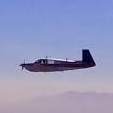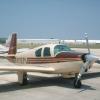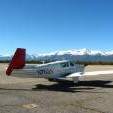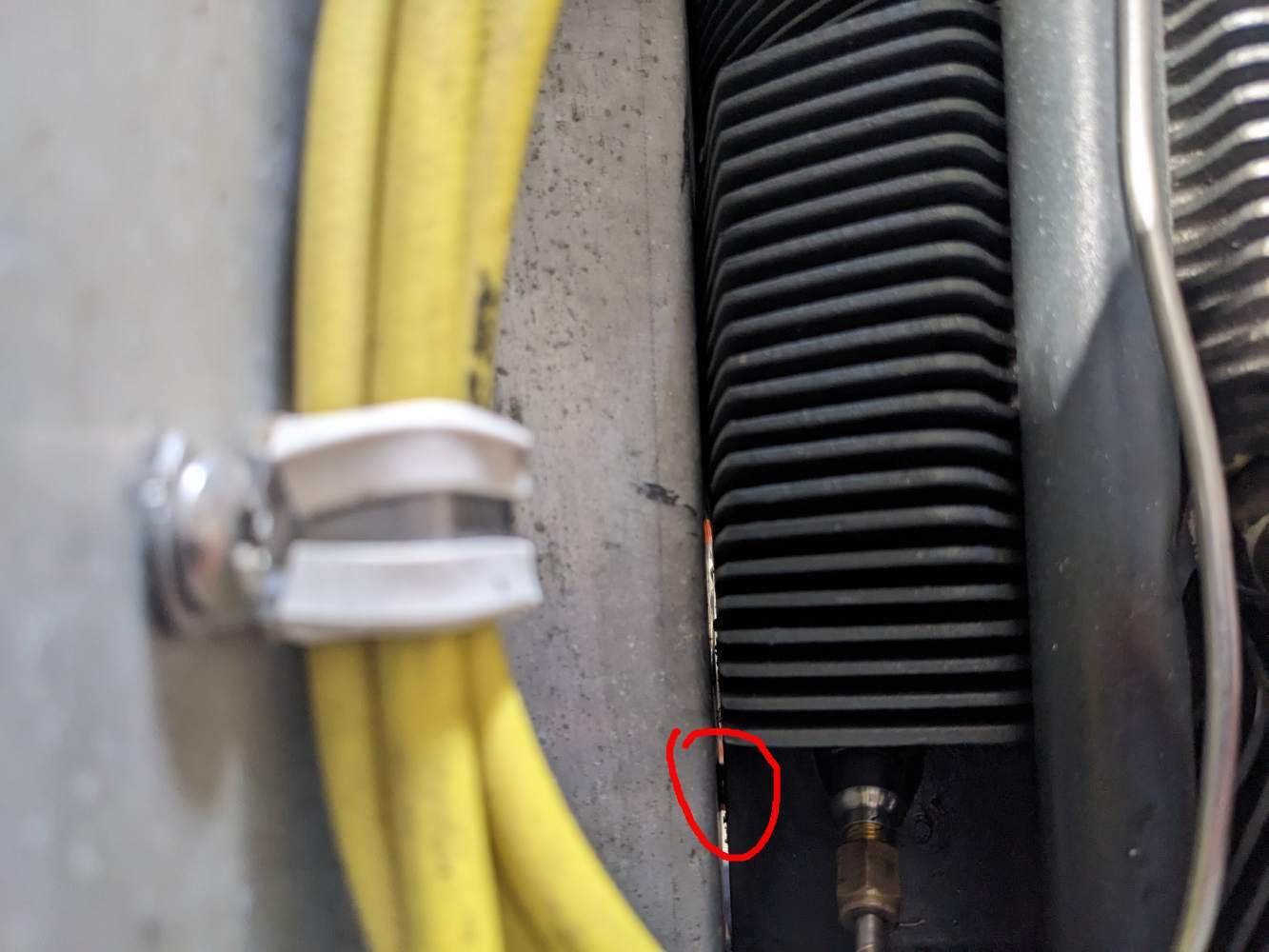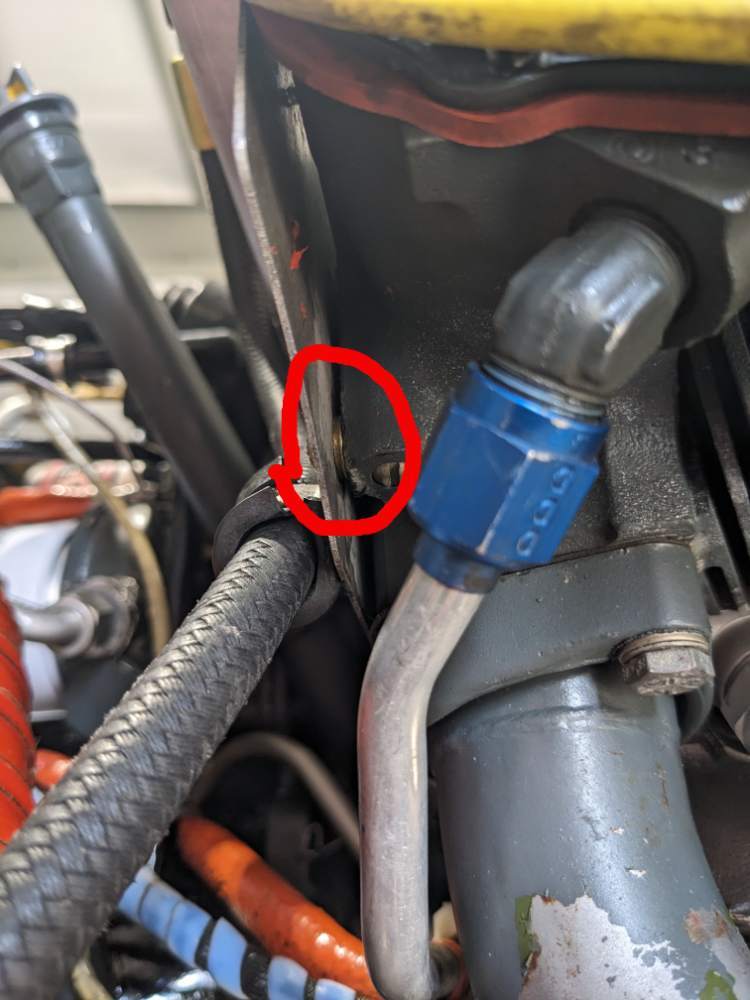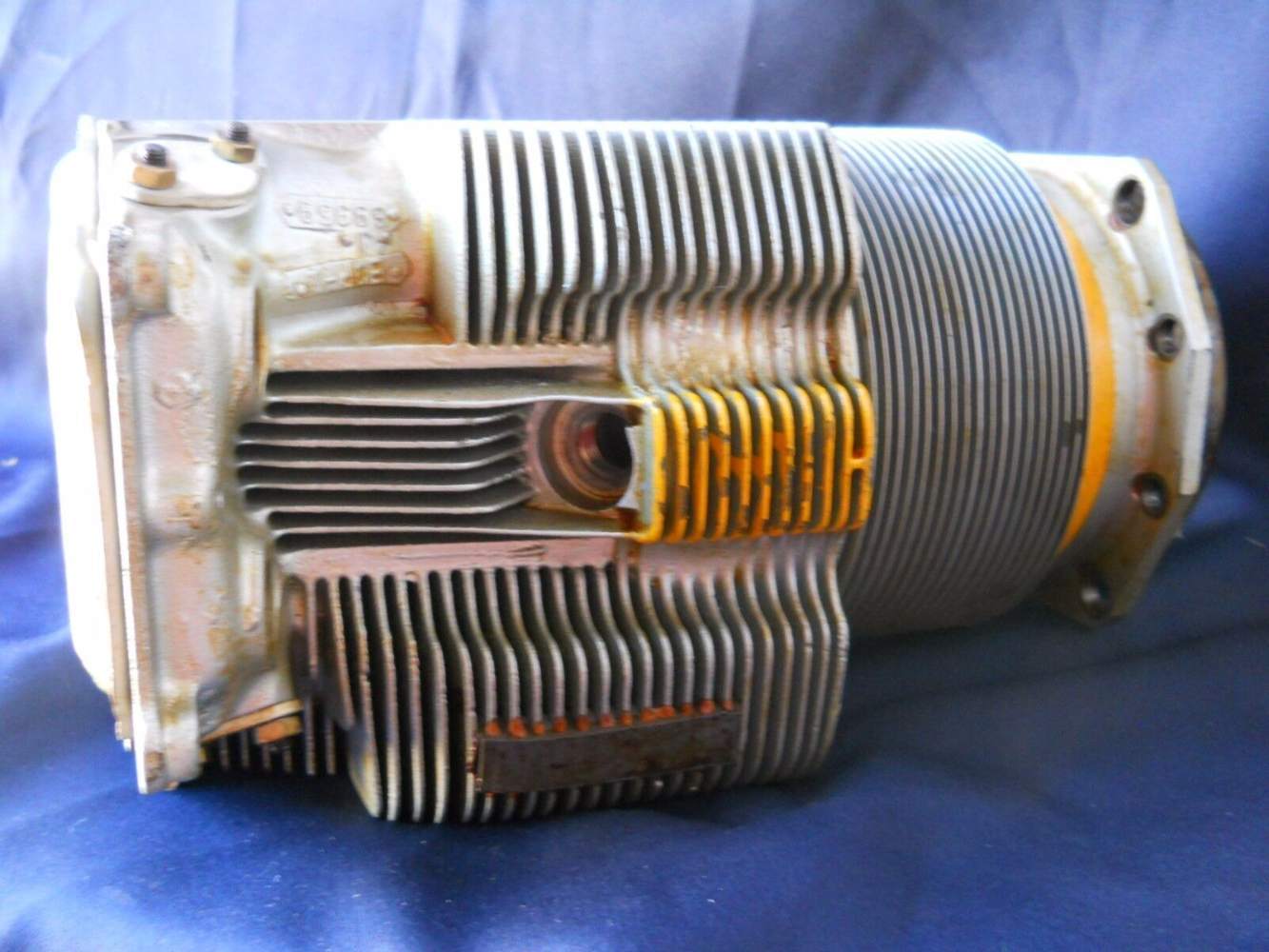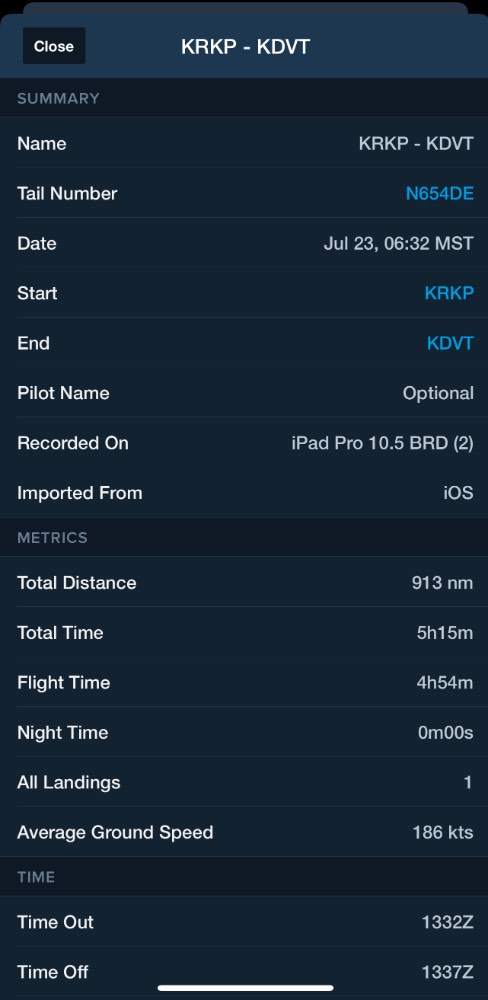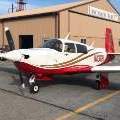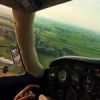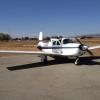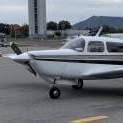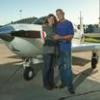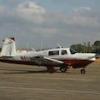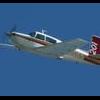Leaderboard
Popular Content
Showing content with the highest reputation on 08/06/2023 in all areas
-
On my 74 C which I believe has an electrical system like yours, I had the overvoltage light come on twice within about a month. Both times it reset with no more spurious indications. Suspecting the vr was going bad, I ordered the Zeftronics vr for my make and model and put it in the baggage compartment just in case I had got stranded on a trip. That vr stayed unopened in my baggage compartment for years until I sold the plane without a single recurrence. My advice is buy a zeftronics and put it in your baggage compartment.10 points
-
There is zero performance benefit to a dual Surefly installation. But there is the risk of a dual failure if electric power fails, or something as stupid as a wire breaks, or breaker fails, or one of the coils inside the Surefly fails. By keeping one properly maintained conventional magneto, you retain backup no matter what. Remember, we know the failure modes of magnetos after more than a century of experience with them. A well maintained magneto is pretty reliable. We have less than five years experience with Surefly, and it contains an electronic control board inside. Electronics have difficulty handling high heat long-term. In this situation, we're asking a circuit board to live in an environment that would kill most boards quickly. 200 to 300 degrees are seen in the engine compartment, and most electronics are only good to 150. The jury is still out on longevity. And I'm otherwise happy with the Sureflys I have on my Aztec. But there is no way I would put two on each engine at this time.6 points
-
Make it tight enough and you don't need safety wire Also two gaskets are better than one4 points
-
My plane doesn’t have enough room to use an air driven impact so I use a 6 foot breaker bar to make sure the engine filter can’t be removed by a normal mortal using normal tools.4 points
-
update: went on the hunt for loose/goobered up wiring. on the back of the alternator there is a threaded post with several wires/ring connectors on it. the nut was loose and all connections behind it were loose. I cleaned up those connections and tightened the nut. went on a test flight and had zero issues with the voltage light coming on. that's only one flight but still, so far looking good. I really hope that was it and will be a little embarrassed but upon visual inspection I don't think I ever would have caught that it was so loose. will update after another flight or three.4 points
-
It's been mentioned before, that if we had only had electronic ignitions and somebody invented a shiny-new ignition system that was self-powered and only had a few simple components, people would be paying up to get rid of those complex things that need electric backups and get the new simple system.4 points
-
3 points
-
I just tighten mine up till I see the filter housing start to deform. I've never had one come loose yet.3 points
-
This is unlikely to be a battery issue, it sounds like the alternator stopped producing power and the reset fixed it. This may be an alternator or regulator or wiring issue, but the first thing I'd look at is that the wires at the alternator are clean and secure. The field wire in particular is a common source of issues, so just inspecting that the connection isn't loose at the alternator is a good first step. This means checking the connection at the alternator and that the wire is secure in the crimp to the ring terminal. Edit: Often when cycling the breaker fixes it it is an indication that the regulator went a little wack for a minute, but it doesn't mean the regulator needs to be replaced. If the wires are secure and clean you might try just flying it to see if it recurs.3 points
-
Opinions vary by airplane and operation, of course. I'm guessing an international 787 captain wouldn't call it "hard IFR" until cat III autoland is required. For me, in piston singles, the distinction is generally whether one actually needs to fly a standard instrument approach to land, vs. simply descending through an overcast on an airway or vector, and being cleared for a visual approach below. If I have to navigate IMC to the FAF, and especially if I'm still in the soup when I get there, I call that "hard IFR". My rationale for this isn't so much how close the conditions are to minimums for the approach. I think of it more in terms of how much VMC time I have to deal with a problem. Imagine you're in the clouds, the engine fails, and you glide down to visual conditions. If you have a couple of minutes to decide where to put it down once you can see, that's not hard IFR. If you only have a couple of seconds, it is.2 points
-
2 points
-
Here's a picture of a IO-360 cylinder. Pretend that you are looking down on your #3 cylinder from above and in front of the engine. The top of the picture is the back side of the engine. If you look carefully at the cylinder head casting, you'll notice that there is no space for air to flow from the top of the engine to the bottom of the engine on the back side of the engine around cylinder #3. This will be obvious if you look at your engine and shine a flashlight on the area. To increase airflow, some have separated the baffle from the cylinder head by inserting one or more washers as spacers between the head and the baffle. If I were going to do this, I would insert them at the screw that attaches the baffle to the head rather than just forcing them between the baffle and the head to insure that they cannot vibrate out. The usual caveats apply: Make sure that your instrumentation and baffle seals are correct before modifying things. The #3 cylinder has the factory gauge, and if you have a non-primary engine monitor, it will have to either have a spark plug gasket probe that generally reads about 40 deg F high, or a ring probe that goes under the factory bayonet that usually reads about 20 deg F low. If you have a spark plug gasket probe, it is easy to see how much it reads high by temporarily moving it to Cyl #1 and comparing it's reading to the bayonet probe in cyl #1. Skip2 points
-
You are correct about everything you said. The actuator does have to compress the springs in the actuator rods. And if it compleatly compresses the springs, something has to give, it will either bend the floor, or the rods themselves. That assumes the problem is on the gear down side. There are no tests like the preload tools for the gear up position. If the gear is over retracting, there is nothing to stop it except the floor bending. It puts the main gear actuator rods in tension, and they will take a tremendous force without damage. The nose actuators will be in compression while retracting, but the nose wheel still has about an inch to go before it will hit the wheel well when the mains hit the bumper in their wheel wells, so the nose is never a problem. Except, you may bend the gear doors if you over retract it. I still contend that a properly rigged landing gear will not bend the floor. Especially, not 1/4 inch.2 points
-
I’ve started running my big bore turbo Continentals at 45% power give or take. I don’t give up much speed. i fly to San Antonio several times a year. 70% gets me there in 4.1-4.6 (depending on winds) “chock to chock” and burns about 145 gallons. 45% gets me there in 4.4-4.9. 20 minutes give or take extra flight time, but I only use 115 gallons. i flew non stop from Rockport TX (near Corpus Christie) and only used 135 gallons. At 75% I’d have had to stop for fuel and it would have taken me longer to fly “faster”.2 points
-
Certainly true for older airplanes that didn't have the stepped stop nuts, but a M20V should be nonjamming.2 points
-
2 points
-
I just went through that same thing. Royal PITA. There are diagrams in the IPC, but they aren't detailed enough to be very helpful. The cable from the flaps runs up from below the console and the end is glued into a hole in the bottom of the round clear shaft that is the indicator. The shaft runs in a channel in the body of the flap and trim indicator. In my case, it was the cowl flap indicator that broke, but the design is the same. The problem is that the shaft didn't line up that well with the channel and the sideways flex eventually broke it off. When they break, they fall down between the front of the console and the nose wheel well. To fix this, I had to drill the pop rivets out of the right console side panel, remove all the screws from the console front and the controls on the front of the console so that I could pull the console forward to get access. The flap and trim indicators are fastened to the the console front, so you'll have to remove the entire indicator assembly to get access. Then you can find the broken shaft and glue it back on with acrylic cement. Then you get to put the whole thing back together. Skip1 point
-
It’s quite simple really. Hard IFR is when it isn’t easy IFR. What you find easy or hard depends on experience, equipment, and proficiency.1 point
-
1 point
-
This is what I use on mains, but being based for 7 years where every takeoff and landing involved back-taxiing, I use Condor nose tires. In 15 years, I replaced nose tire three times, and the mains just once; the tires were not new when I purchased my C. Air Stop tubes are the cat's meow!1 point
-
In addition to the control/runaway possibilities and the mechanical/jam possibilities that have been mentioned, I also don’t want to discount the possibility of an electrical issue with the wires or the servo motor. The plane had been standing for seven months in Arizona and there were a few electrical issues that worked themselves out when it started to fly again. Thank you everyone for your thoughtful responses.1 point
-
That's a good point. I guess it's not clear to me from the OP whether the movement is occurring at the end of extension and beginning of retraction (which I would consider normal), or at the end of retraction and beginning of extension (which I agree is more disconcerting). Per the service manual, the mains should not actually touch the bumper pad in the retracted position, so significant witness marks on the bumper pads might indicate a problem. Other things could hang up too, including the gear doors, though I'd think the gear doors themselves would flex before any significant flex in the belly pan as retraction completes.1 point
-
1 point
-
Well, my F has 5800 hours and does NOT have any seat flex. It would most certainly bug me if it started doing that!1 point
-
1 point
-
Yes, RAM series 1 (300hp). 2300 rpm, 12.5gph. And whatever MAP it takes to keep it there, usually 25-26”. Depending on altitude I can get lower FF. Coming back from RKP I was at 14500 and closer to 11.3 gph. i pretty much do like boomer said above. I pull it back until I’m happy with fuel remaining at destination number on my fuel flow computer.1 point
-
That is why for the ship's main battery, it should be capacity checked every so often. Concorde has recommendations of how often to do it based on the age of the battery. And they also say that the ability to start the engine easily has NOTHING to do with the battery capacity. The Garmin G-5 has a procedure to check it's internal back up battery. If I had a dual electronic system, the extra back up for one of them would also get capacity checked periodically.1 point
-
Not to nitpick, but when you say manual do you mean manually using the trim switch or actually reaching down and adjusting the trim wheel on the floor? I didn’t even know a servo could freeze like that, my understanding is the clutch is supposed to release with “x”#’s of pressure. I’d be very curious to understand how this can happen.1 point
-
1 point
-
Had the same issue with my 252. The shop ended up finding a leak from the fuel pump during the annual. Replaced it and never faced that problem again.1 point
-
If it was a trim runaway, the clutch on the trim servo should have allowed the trim to be adjusted even with the servo running full nose down, of course the trim would run back as soon as you let go of the wheel. This assumes the trim disconnect switch wasn’t working. It would be very rare to have failure where the trim disconnect didn’t work.1 point
-
1 point
-
You're right too much we don't know. But I was betting electric trim commanded down. But any example I come up with the AP commanding it down, with the pilot pulling back should cause AP to disconnect. Really too little info to go on.1 point
-
My plane did that when I bought it. The rear support for the actuator was in upside down. It could also be up or down limit switches. Either way, there is something wrong with the actuator rigging.1 point
-
1 point
-
1 point
-
I agree with @EricJ. I’d check ALL the wiring connections and the alternator brushes before replacing anything. A quick search of the site will find lots of instances of people replacing regulators and alternators that did not fix the problem. Also, agree it’s not the battery. They will “work” until they won’t crank anymore because the alternator, not the battery, supplies power during flight. However, the capacity (amp-hours) decreases over time, and even though the battery may still “work”, if the alternator dies, you might only have battery power for a few minutes. This is an important consideration if you fly IFR, and it’s a good idea to get a capacity test annually.1 point
-
Based on the symptoms and outcomes I was leaning towards a bad VR. But what I wanted to avoid was putting the new battery in then something going wrong (either VR craps out or alternator) thus damaging the NEW battery.1 point
-
Sounds like the right time to install the battery, easy to do and since you already have it, after 6 years the battery doesn’t owe you anything and you’d hate to be grounded away from home because of it. If that doesn’t work out, check all connections on alternator and voltage regulator are clean and secure. If that doesn’t work, try a new voltage regulator.1 point
-
I've dodged many thunderstorms this summer using the Stormscope WX10A in our J. This year is my first experience with one. Wow. Great technology. The Stormscope is based on differential reception of "sferics", the radio frequency noise produced by lightning. The receiver is connected to two coil antennas on the belly. It is quite accurate in azimuth. I've done some research to better understand how it works. As I understand it, the unit estimates azimuth this by measuring the time delay between reception of the strike signal by two coils separated by about 8 inches! That's why the processor for Stormscopes is so heavy. It is a very precise instrument. Stormscopes are not so accurate in range. To estimate the range to the strike it uses an assumed relationship between signal and range, which is often a pretty poor approximation. However, with a good measurement of the azimuth combined with the ADS-B composite radar obs on the iPad, you can see the storm and measure the range. Mine sometimes seems to pick up a lot of noise when flying at lower altitudes. Above maybe 5k AGL that goes away. I love it.1 point
-
The displays generated by these systems are approximations. The direction of the detected energy is estimated, and the range is often estimated based on the received strength compared to some reference strike level. So stronger strikes appear closer and weak strikes appear further away regardless of their actual location. The information can still be very useful, especially in the presence of strong storms and frequent strikes, but it should be recognized that the indications are approximations and do not carry a lot of accuracy.1 point
-
1 point
-
1 point
-
There must be a few dozen threads are flying with dogs. Let google be your friend to search MS. I’ve owned two Labs, sequentially, and now my Mooney sized 35lb Terrier. All have been in the backseat with a harness and leash tied to shoulder belt just in case of bad turbulence and to keep them in the back seat. But we’re two pilots up front with no room anyway. But regardless i sure wouldn’t want a dog trying to get on our lap in the front seat. All of my dogs have done much better at altitude than ourselves and flying at 16K has never been a problem. But although most dogs including yours will be fine too, some dog breeds, like pugs, do have breathing issues. Hearing protection is the challenge. Vets have told me that won’t live long enough to worry about it but i could always tell none of my dogs like the noise. They’ve all had mutt muffs on. But keeping them on is a learned behavior. Labs aren’t the smartest breed both took quite some time to learn to keep the mutt muffs on. Both required re-positioning it properly after startup before they would leave it there in flight. My Jack Russel terrier though is much smarter and in just a couple flights, quickly learned to keep it on before start up. Some use a crate, which makes sense for an unknown dog. But not for a family member unless your expecting problems. Never even came close to a dog having an accident in the back seat either. But we make sure they get a bit of a walk before takeoff to relieve themselves. Thankfully there are many more pet friendly hotels since we first started flying with dogs 30 yrs ago. That was always the first problem before we could depart. Sent from my iPhone using Tapatalk1 point
-
Just to update everyone, Upon inspection with the FAA Inspector and A&P/IA, they found that the internal baffles had broken off inside the muffler. The FAA Inspector and IA noticed heat marks and deformation on the inlet pipes going into the muffler housing indicating that the exhaust gases couldn't flow smoothly out of the exhaust and became trapped. They determined that the piece of the exhaust baffles had become lodged and obstructed almost all of the exhaust exit hole in the muffler, thus causing the immediate reduction in power and inability for the engine to run properly or make any power to maintain flight. They did say that they had seen this once before on a different aircraft and normally when a muffler fails the pieces simply blow out the tailpipe. I guess I got very unlucky that mine got stuck. I was very lucky however, that i had such a great spot to make an emergency landing!! We got a new muffler overnighted and made the necessary repairs yesterday. The FAA approved all of the work and all the ground runs showed that the problem was corrected. I was able to take off yesterday afternoon with the plane and fly it back to my local field. I played it safe and made the trip at a high altitude so I had options should any issues arise on the way back. I will say that the FAA Inspector was amazing and did a great job. He never approached with the attitude that he was out to get me and if anything, he was extremely understanding and compassionate to the issues. He reiterated several times that I did the right thing and made safe decisions to result in this positive outcome. He said this is why we have emergency procedures and pilots should never hesitate to use them! Then he said, Never let your pride get in the way of your safety! Thanks all for the kind words above and thanks for reading. Stay safe and fly Smart- Matt1 point
-
From Lycoming SI1009 CALENDAR TIME PERIOD TBO All engine models are to be overhauled within twelve (12) calendar years of the date they first entered service or of last overhaul. This calendar year time period TBO is to mitigate engine deterioration that occurs with age, including corrosion of metallic components and degradation of non-metallic components such as gaskets, seals, flexible hoses and fuel pump diaphragms. CAUTION CALENDAR YEAR TBO IS BASED ON ACCELERATED TESTING AND OVERALL FLEET SERVICE DATA. LOCAL CLIMATE CONDITIONS, STORAGE CONDITIONS, FREQUENT EXTENDED PERIODS OF INACTIVITY, PRESERVATION TECHNIQUES USED DURING INACTIVE PERIODS, AND FREQUENCY OF OIL CHANGES CAN AFFECT CORROSION OF METALS AND DEGRADATION OF NON-METALS.1 point
-
An OP takes a moment to share a fairly excruciating if not traumatic experience with us here at the board that involves death, family and children. Then by whatever methods, the thread is allowed to devolve into a pissing contest. As a community, i find that in terribly poor taste. A thread of this kind should genuinely be about providing an ear for the OP, supporting the OP, lending a helpful hand, and hopefully not pulling out the rulers for appropriate measure. There are hundreds of other threads for that. IANAL, and what’s typed is strictly my own opinion.1 point
-
Just to update all my fellow MooneySpace Family, I was the PIC of this flight. It happened quick as most emergencies do. We (my family and I) were in solid IMC at 5k when I lost almost all power very suddenly and without warning. I worked through the emergency procedures checklist but had no success. I advised ATC of my issues and started a descent to VMC about 1000’ ft below. After the emergency procedures didn’t recover the power loss, I advised I was declaring and proceeded to get vectors for the nearest field. I was about 9 miles from the nearest and I worried if I lost the engine we may not glide all the way to the field. When we broke out, I could see what I thought was an airstrip about a mile or two off the nose. ATC advised I was near a private airfield and I thought that’s what I was looking at. I informed ATC of my intentions to circle this field and make a landing. We landed safely and not a scratch on my family or the plane, thank god! Only after I landed did I find out we landed on the Consumer Reports testing facility track. It’s about 4400’ long and makes a great emergency LZ! Now to work through the process to determine what happened and what’s next. This is a sobering reminder of why to practice practice practice, constantly refresh yourself with the POH and your checklists and stay sharp! I credit my save to my flight training and the many days I spent with my CFI working through this stuff! I will continue to be a student of the game and always press myself to study, practice and stay sharp! …..your life and others depend on it!1 point
-
I think EAA has a model of how group sites could be reserved based on the mass arrival groups. Also in experimental and vintage, they manage to park like types together with reserved spaces and minimum chaos. Maybe they could put a time limit on it -- if you don't arrive by Monday morning, the spots revert back to first come-first serve. But even if EAA extended what they did for Cessnas during this Oshkosh - allowing 25 reserved adjoining spots for non-formation arrivals - to all the groups with existing formation arrivals, you could really extend participation and grow the community. It would be awesome if a couple rows were saved along side the caravan for more Mooneys. I miss Yves pizza Mooneyspace gathering as another way to socialize with other Mooney owners.1 point
-
I have a 1975 Mooney M20F with 5709 TT and 207 SMOH (done in 2017). She is IFR certified, interior just redone, exterior paint 8/10, Brand new Avidyne 540, JPI 830, Hartzell Prop, Narco DME, Garmin GTX 345, electric trim, Stec 50 autopilot and a new cover. She needs nothing ... $115K1 point


